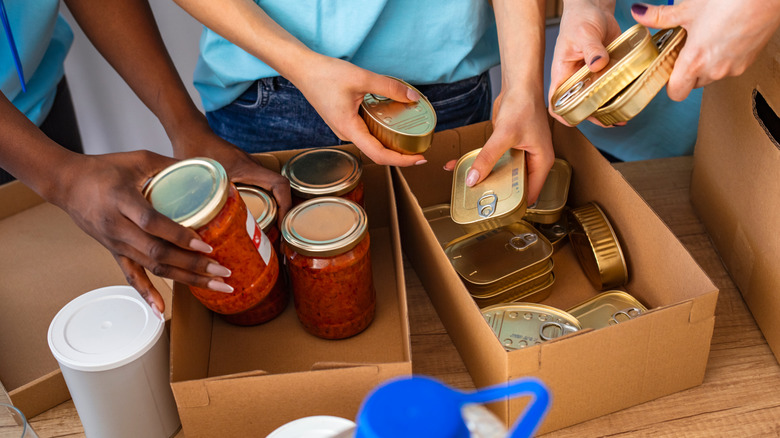Food Banks Are Worrying About The Impact Of Inflation In 2023
The holidays are often referred to as the season of giving. Regardless of which festivities you might involve yourself with around this time of year, or whether or not you celebrate anything at all, finding ways to give back to your community can be an excellent way to help spread holiday cheer as you reflect on the good fortune you've experienced over the past year.
Unfortunately, in 2021, over 10% of American households experienced food insecurity, per the USDA. One way you can help your neighbors who are struggling with food insecurity is by donating to a food bank. According to Feeding America, over 53 million Americans used food banks in 2021. By supplying your local food bank with some of the foods they need the most, like baby formula and canned goods, you're making a great step toward helping a person in need. Food banks become all the more essential during times of crisis, like this 2017 Texas flood. Unfortunately, it seems that 2023 will likely prove to be an incredibly difficult year for this nation's food banks.
Food banks are affected by economic tribulations
According to The Economist, the cost of food in America has gone up by an average of 7% over the course of 2022. It stands to reason that when it becomes increasingly difficult for even middle-income families to stay afloat, food banks will also start to struggle.
Food banks all across the country have already begun to feel the effects of inflation. The Minnesota-based CAPI USA, which usually spends $50,000 dollars to purchase 400 pounds of food, spent around double that amount in 2022, the food shelf's CEO explained in an interview with NPR. The Philadelphia Inquirer, citing Martha's Choice Marketplace manager Hannah Leifheit, explains that the Norristown food pantry, which assists 350 families, almost double the amount that they had been working with only a year ago, may need to reject future families from signing up for assistance is inflation continues to increase.
The food bank crisis is not a uniquely American problem. European food banks are also struggling under the weight of inflation, per the Financial Times. For example, one-third of German food banks have stopped accepting new applications for assistance.

